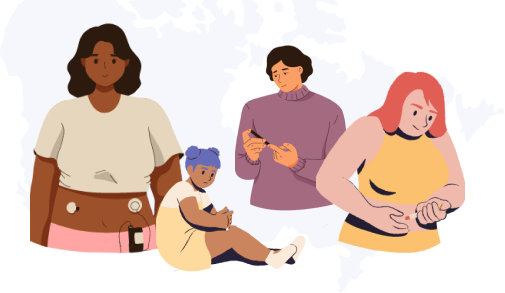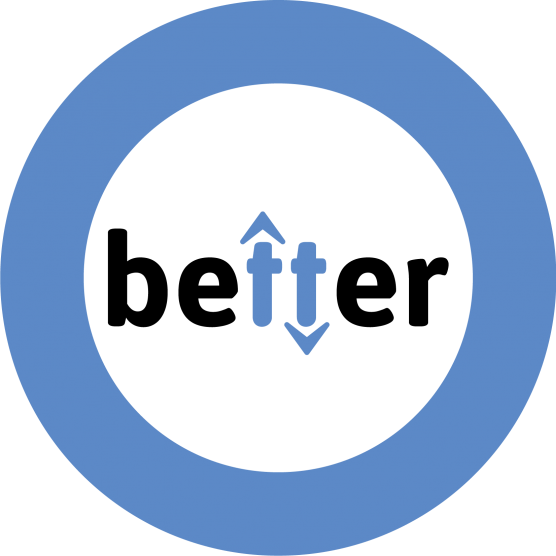Blood sugar control is a considerable challenge for people with type 1 diabetes (T1D). As many as 42 factors affect blood sugar levels, including some that can hardly be controlled, if at all (e.g., hormonal fluctuations, illness, heat, cold).
Did you know that altitude could also influence blood sugar levels? When doing outdoor activities (e.g., mountaineering) or travelling at high altitude, a person with T1D can see their blood sugar levels fluctuate.
Mountain sickness
A quick shift from low to high altitude (> 3,000 m) can cause “mountain sickness,” a condition associated with a decrease in oxygen (called “hypoxia”). Symptoms include:
- Shortness of breath;
- Increased heart rate;
- Nausea;
- Tiredness;
- Inability to eat.
Climbing too rapidly can lead to mountain sickness, while maintaining a steady pace helps the body to adjust itself. People with T1D are not at a higher risk for mountain sickness, but they must be careful not to confuse it with hypoglycemia, which is associated with similar symptoms. When in doubt, it is important to check your blood sugar level to determine what caused the symptoms and make sure that you are not in hypoglycemia.
Impact on blood sugar
Few studies have been conducted to understand how high altitude influences blood sugar levels in people with T1D. Here’s what we know:
Studies essentially show that high altitude first leads to increased blood sugar levels. The lack of oxygen causes a stress to the body and the release of hormones (adrenaline, noradrenaline and cortisol). In the presence of these hormones, the liver releases more glucose (sugar), and the effectiveness of insulin is diminished (insulin resistance).
However, combining high altitude and physical activity has the reverse effect. Results from a recent study show that doing physical activity soon after arriving at high altitude increases the risk of hypoglycemia. The study followed the blood sugar levels of seven people with T1D before, during and after two indoor cycling sessions simulating two different levels: sea level and high altitude (4,200 m). At high altitude, the blood sugar measurements were a lot lower after one hour of physical activity and during the whole recovery period.
Here are a few factors to explain this result:
- Some muscles use more glucose due to hypoxia and physical activity;
- Glucose is eliminated more easily once the body is adapted to the altitude;
- Loss of appetite is frequent at high altitude and can lead to decreased food intake;
- Symptoms of hypoglycemia are similar to symptoms of mountain sickness.
Planning your high-altitude activity
The better prepared you are, the better you will avoid bad surprises and handle problems that may arise.
Generally, whether you are on solid ground or at high altitude, reducing your insulin doses will help minimize the risk of hypoglycemia. This is the safest option, even though it might lead to hyperglycemia.
In addition, significant temperature variations (e.g., day and night, cold) can affect the effectiveness of your insulin. To minimize this risk and avoid thermal shocks or freezing, it is recommended to carry insulin close to your body (e.g., inside coat pocket). The same goes for carbs, glucagon, supplies (e.g., blood sugar meter, insulin pump) and water.
As for continuous glucose monitoring (CGM) devices, they can be less accurate in the cold. So, you should bring a capillary blood sugar meter as well as another type of device.
The delivery of insulin in insulin pumps can also be increased at high altitude and in airplanes. Make sure you read your pump’s manual or seek more information from the manufacturer to avoid this problem.
If your activity is planned over a few days (e.g., trekking), make sure you bring an emergency kit.
The key to a successful mountain hike? Be ready and plan wisely. If you are leaving for a few days, your healthcare team can help you adjust your treatment (e.g., insulin doses, mountain sickness medication).
Don’t let T1D get in the way of your dreams! You can climb even the highest mountains! In 2018, Sébastien Sasseville was the first Canadian with T1D to reach the top of Mount Everest (8,850 m).
References:
- Castillo, Oscar et al. “Residents at high altitude show a lower glucose profile than sea-level residents throughout 12-hour blood continuous monitoring.” High altitude medicine & biology vol. 8,4 (2007): 307-11. doi:10.1089/ham.2007.8407
- Woolcott, Orison O. et al. “Glucose homeostasis during short-term and prolonged exposure to high altitudes.” Endocrine reviews 36 2 (2015): 149-73 .
- De Mol et al., 2014 – Physical activity at altitude: challenges for people with diabetes: a review. Diabetes Care. 2014 Aug;37(8):2404-13. doi: 10.2337/dc13-2302.
- Dugan, Cory W et al. “Effects of simulated high altitude on blood glucose levels during exercise in individuals with Type 1 Diabetes.” The Journal of clinical endocrinology and metabolism, dgab881. 22 Dec. 2021, doi:10.1210/clinem/dgab881
- «Trek, altitude et diabète», World diabetes tour, consulté le 25 janvier 2022, https://worlddiabetestour.org/fr/diabete/trek-altitude-et-diabete
Participate in the BETTER registry!

First registry of people living with T1D in Canada.
Learn More








